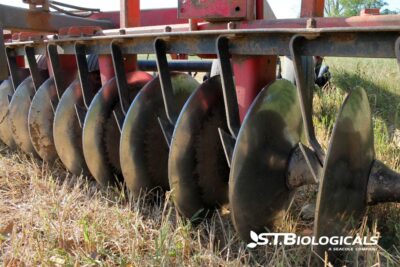A foliar spray of micronutrients is a powerful tool for improving plant health and crop yield. Unlike soil amendments, foliar feeding delivers nutrients directly to leaves, bypassing common soil deficiencies such as pH imbalance or poor microbial activity.
Why Foliar Feeding Matters
Why does foliar feeding work? Micronutrients such as zinc, iron, boron, copper, and manganese play vital roles in plant metabolism and applying them via foliar sprays ensures rapid correction of nutrient deficiencies.
What are the essential factors that optimize foliar application effectiveness? How do they work, and how do you apply foliar micronutrients for absorption efficiency?
Mechanism of Foliar Micronutrient Uptake
For maximum plant health, foliar nutrient absorption depends on the following leaf surface properties and environmental conditions.
- Cuticle penetration: Nutrients dissolve in the aqueous film on leaf surfaces, diffusing through the waxy cuticle.
- Stomatal absorption: Micronutrients enter through open stomata, especially when humidity conditions are favorable.
- Hydrophilic pathways: Small pores and trichomes aid in nutrient absorption beyond the cuticle barrier.
- Endocytosis: The plant absorbs the nanoparticle and then offloads the nutrients because of nutrient concentration.
Factors That Influence Foliar Feeding Efficiency
- Temperature & humidity: Higher moisture levels enhance nutrient uptake and absorption rates.
- pH balance & spray formulation: Chelated micronutrients improve solubility and leaf absorption.
- Droplet size & surfactants: Fine mist sprayers ensure even distribution, while surfactants reduce runoff.
Unlike soil feeding, foliar micronutrient application delivers immediate nutrient correction, helping plants avoid deficiency-related stress and maximize growth potential.
Key Micronutrients for Foliar Application
Micronutrients are essential for plant metabolism, photosynthesis, and stress resistance. Common foliar-applied micronutrients include:
- Zinc (Zn): Regulates enzyme functions and hormone production for healthy plant development.
- Iron (Fe): Critical for chlorophyll synthesis and oxygen transport. Deficiency leads to chlorosis.
- Boron (B): Essential for cell division, flower development, and pollination success.
- Manganese (Mn): Aids in photosynthesis and metabolic enzyme activity.
- Molybdenum (Mo): Key to nitrogen metabolism. Deficiency disrupts nutrient processing.
- Copper (Cu): Supports lignin synthesis, plant structure, and disease resistance.
Best Practices for Foliar Spray Timing & Formulation
Optimizing Foliar Micronutrient Uptake for Maximum Benefits
- Avoid phytotoxicity: Proper micronutrient concentrations prevent leaf damage.
- Use chelated micronutrients: Chelation improves solubility, uptake, and overall effectiveness.
- Apply at strategic growth stages:
- Early vegetative: Zinc & iron for strong chlorophyll production.
- Flowering phase: Boron & manganese for improved pollination.
- Fruit set & maturation: Copper for cell integrity.
- Best application timing: Cooler morning or evening hours reduce evaporation and improve absorption.
Practical Application Techniques for Efficient Nutrient Uptake
To ensure maximum foliar micronutrient absorption, use precise application methods:
- Fine mist sprayers: Ensure uniform coverage and controlled droplet size for absorption.
- Surfactant integration: Non-ionic surfactants help micronutrients adhere to leaves efficiently.
- Compatibility with other treatments: Foliar micronutrients can be combined with biostimulants and pest management strategies to enhance results.
The Key to Foliar Nutrient Success
Foliar application is a game-changer for micronutrient delivery, ensuring rapid nutrient correction without soil limitations. By optimizing formulation, application timing, and spray methods, growers can enhance plant health, improve yields, and drive sustainable agricultural success.
The ST Biologicals mentors can help you understand how to integrate foliar sprays to improve micronutrient uptake at your operation. Visit stbiologicals.com to learn more. We’re here to help you succeed. When soil speaks, we listen.

